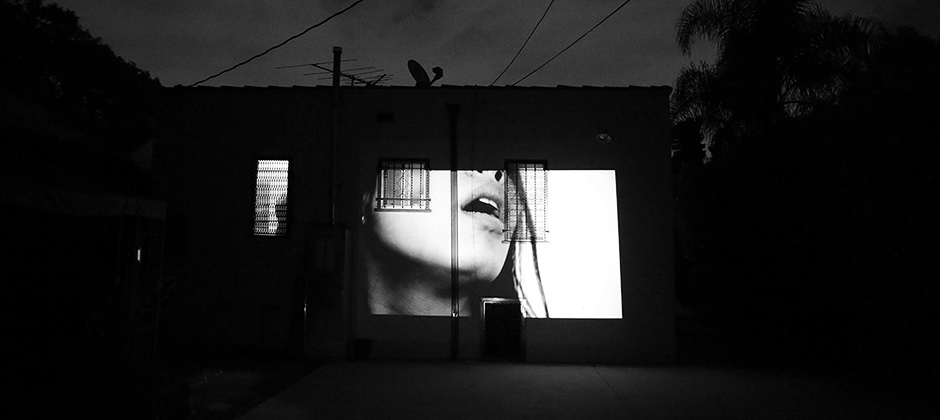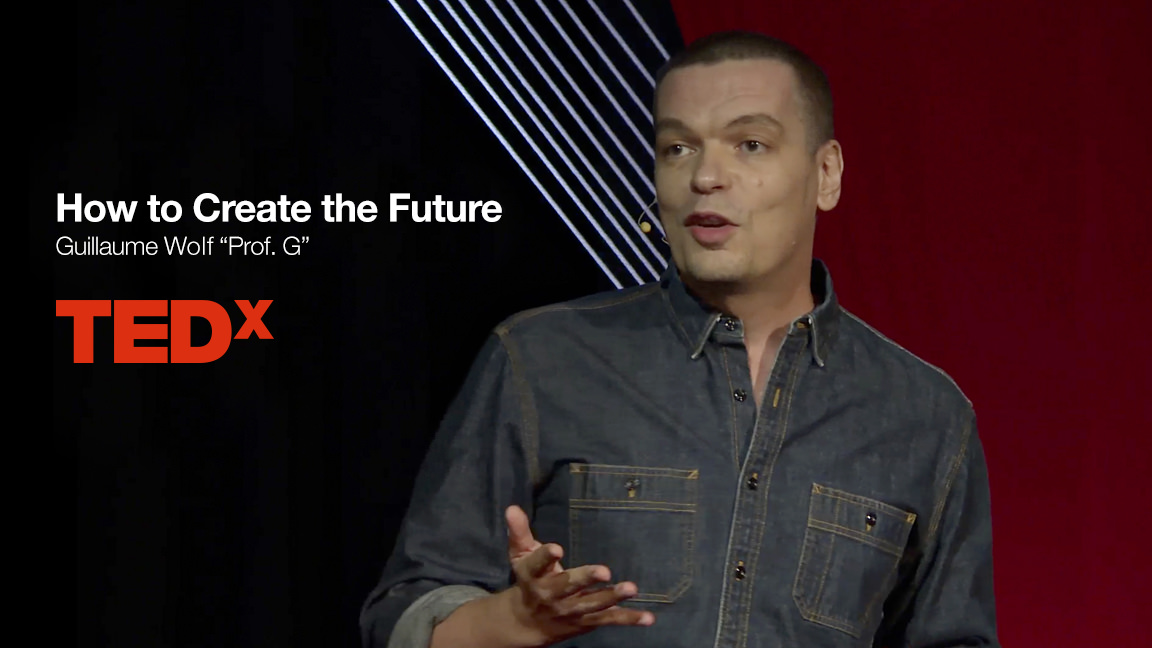Whitewall’s winter 2016 Luxury Issue includes a feature story on the late artist Paul Laffoley. Between going to print and the issue hitting newsstands, we were saddened to learn of the visionary artist’s passing in November of last year. Below, we offer you our Creative Director Guillaume Wolf‘s illuminating and fascinating interview with Laffoley as a way of honoring his legacy.
GUILLAUME WOLF: Tell us about your work process. What’s your typical day at the studio?
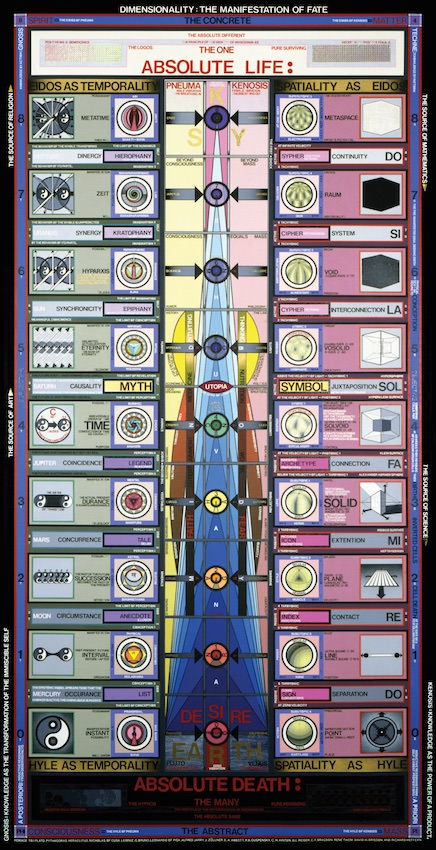 PAUL LAFFOLEY
PAUL LAFFOLEYDIMENSIONALITY: THE MANIFESTATION OF FATE
1992
PAUL LAFFOLEY: Every day, I’m up at the crack of noon. [Laughs] I like to stay up all night to work.
GW: Do you work solo?
 Oil, acrylic, ink, hand applied vinyl letters on canvas
Oil, acrylic, ink, hand applied vinyl letters on canvasPL: Yes, I move from one piece to another.
GW: You wrote that one of your early influences is the classic sci-fi film The Day the Earth Stood Still [1951]. What was so important in this film?
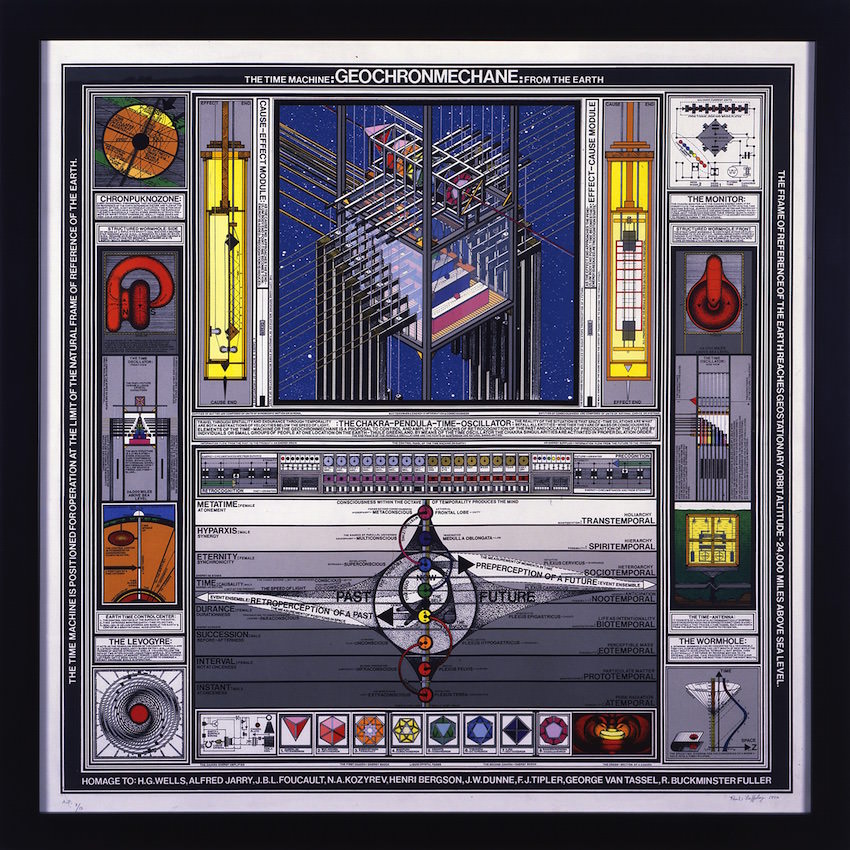 98 1/2 x 49 1/2 inches
98 1/2 x 49 1/2 inchesPL: I saw it when I was eleven years old. It reminded me of something that was going on since I was seven. There was this Italian guy, a landscaper that would trim [my parents’] bushes. He said he had been taken up in a flying saucer. So I had an early connection with UFOs. Of course my parents said, “He must be nuts!” [Laughs] But I found it fascinating. And when I saw the movie, I thought, “This is the same thing!”
GW: When someone asks you what you do, do you tell them you’re an artist, or a mystic?
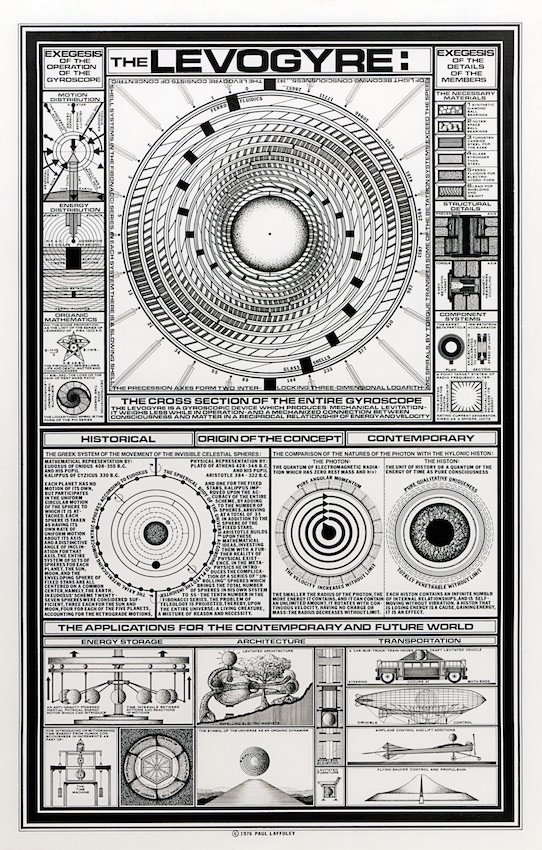 Courtesy of Kent Fine Art
Courtesy of Kent Fine Art
PL: No, I usually don’t say anything. I just show them what I do.
GW: Most of your paintings have to do with human transformation and evolution. You’re showing us a map of possibilities. It seems you have a message.
PL: If you believe in evolution, it’s almost inevitable. A lot of people don’t believe in evolution. But to assume they we are at the top of the evolution is probably incorrect. A lot of the thing that I do in my work is to figure out how to make mass and consciousness a continuum. No one really understands how consciousness works, yet it operates with mass.
GW: I heard that your ideation process is linked to a foreign object next to your pineal gland. Can you tell us more about it?
PL: In 1982 I broke a tooth trying to eat a Portuguese toast. [Laughs] Then I did a CAT scan, and the technician asked me, “Have you ever had your neck broken?” I said no. Then he asked, “Have you ever been shot?” I said no. “There’s something in your head,” he said. He told me there was a foreign, vertically aligned object that looked like a bullet. He was hinting that this object could be of extraterrestrial nature.
GW: You’ve been doing this since 1962. How did you stay committed to your art for so long? What’s your motivation?
GL: I don’t get bored. I have Asperger syndrome. It’s a form of autism. Which means I can concentrate on something, exclusively, for hours. I always knew I had something that needed to come out, and now it’s happening: I have a major book coming up in January, things like that. Time goes by. To me, yesterday was 1962—I don’t notice the passage of time.
GW: Let’s talk about time. In your painting The Levogyre [1974], you offer the blueprint for a time machine based on a gyroscope. What’s the concept behind this idea?
PL: It’s a new type of gyroscope. At first everyone thought I was crazy—that is, until in 1989 some Japanese physicist discovered that any gyroscope weighs less while it’s in operation than when it’s still [Source: Hideo Hayasaka and Sakae Takeuchi, “Anomalous Weight Reduction on a Gyroscope’s Right Rotations about the Vertical Axis on the Earth,” Physical Review Letters 63, 2702 (1989)]. With my idea, the Levogyre utilizes all the infinity propositions, the logarithmic spiral, like the black hole. It’s a series of nested spheres that work together. It’s been fragmented, and it turns into two interlocking tridimensional equiangular spirals. And then I have a laser going in a circle. So I have something going at the speed of light in the device. It’s done by combining the work of a steelworker and Swiss watchmaker. It requires an engineering feat that would cost billions of dollars just to make the first one.
GW: It’s a gyroscope within a gyroscope, within a gyroscope, and so on . . . correct?
PL: Yes, the shells are assembled using ferrofluid oil, so you can stack them. And then the whole contraption will go in the air. It disconnects [from regular laws of physics]. It creates a time dilation that’s much stronger that anything that Einstein thought of.
GW: Later, with Geochromechane: The Time Machine from the Earth [1990], you come back to the time machine idea, but here, it seems you’re moving away from a strictly mechanical device to include the human body—we see a depiction of chakras. Did your idea about time travel change?
PL: This was part of my quest to find a way to make consciousness in mass continuous. That’s what we are. We are walking-around-devices that make mass and consciousness continuous—that’s how we live. That’s the secret of the whole thing, that’s how we can do time travel. In order to get a person operating it, you have to set it in geosynchronous orbit and have cubes that contain pendulum systems. And each pendulum system contains a Levogyre. And what I discovered is that if you have two or more singularities, you can distort the normal flow of retro- and precognition. Because we’re all, in essence, time machines to begin with. Using a Wheatstone bridge circuit on the chakras, you can access our natural capacity for retro- or precognition.
GW: Do you consider yourself to be a time traveler?
PL: We’re all time travelers. [Laughs] Doing what H. G. Wells did . . . I have a painting that describes it [Dimensionality: The Manifestation of Fate (1992)]. I’m using, again, diagrams. It looks like a Kabbalistic Tree—it has three columns. Three-ness is the first revaluation after one. Not two. We walk on six points.
GW: That’s the Buckminster concept, right? Humans operating on six axes?
PL: Yes.
GW: What about the upper levels of dimension?
PL: You have to have mystery. You need to have dimensions that are beyond our comprehension.
GW: One of your most famous pieces, The Thanaton III [1989], is a mind-matter interactive device, where the viewer is invited to place his hands on the painting and stare at a central all-seeing eye. In that sense, the painting acts as a transmission device, correct?
PL: Yes, but I can’t explain how it works—it’s beyond me. That’s why I was speaking of having a sense of mystery. This is what the concept of fate is all about. It is spoken, but you don’t know why it is spoken.
GW: To have a certain sense of awe is important?
PL: Yes. It’s recognizing the reality of powers beyond ourselves.
GW: Is this painting a pyschotronic device? What’s your experience with it?
PL: Yes. I got dreams! Lucid dreams. I saw the Omega gallery, and I saw these things I could not believe—sculptures. And I felt I would be absorbed by them. I had to get away from them, quick. They had a power. I ran screaming out of the place.
GW: Describing it, you wrote: “I have also received other information I cannot understand. Since this information was given to me directly but not for me per se, it must be communicated to others, many of whom are better prepared than I to receive it.” Are you inviting future generation to experiment with this geometry? What can they expect playing with it?
PL: The future is open. And other people will recognize what they are. We think about numbers. Zero and ones. That’s what the electronic age is all about. People working at MIT, with artificial intelligence—they’re not solving the problems we’re talking about. They’re making robots more sensitive to human needs.
GW: So the challenge is to find out how to unite mass and consciousness?
PL: How we can move into a world in which we can unite everyone—and none at all—at the same time. It’s a classical paradox. It’s like a guru who goes to a hotdog stand in New York, and says: “One with everything.”






![4_Paul Laffoley_1992_DIMENSIONALITY THE MANIFESTATION OF FATE] PAUL LAFFOLEYDIMENSIONALITY: THE MANIFESTATION OF FATE1992](https://whitewall.art/wp-content/uploads/elementor/thumbs/4_Paul-Laffoley_1992_DIMENSIONALITY-THE-MANIFESTATION-OF-FATE-qfjz4myoks4me5fpi3y7jowacxitgkqks7uo33b6f0.jpg)

